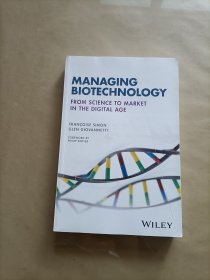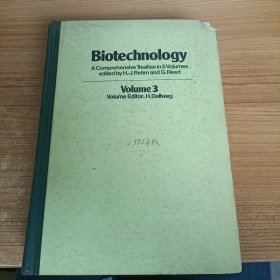
现货Biotechnology and Plant Genetic Resources[9781682511787]
¥ 1434 九五品
仅1件
作者Jens Keilwagen, Benjamin Kilian
出版社Intelliz Press LLC
ISBN9781682511787
出版时间2016-01
装帧精装
纸张其他
正文语种英语
上书时间2023-08-08
- 最新上架
商品详情
- 品相描述:九五品
- 商品描述
- Plants are the basis of life on planet Earth. Plants are the only organisms capable of using the solar energy for transforming the carbon dioxide in the air into organic substances. Consequently, plants produce food for all and reduce the global warming. Agriculture, with nurturing and utilizing plant diversity, plays a key role in feeding millions and protecting our natural resources and the environment. Plant genetic resources are any living material of present and potential value for humans. Plant genetic resources include all our agricultural crops and some of their wild relatives because they possess valuable traits. Biotechnology and Plant Genetic Resources describes the application of novel genomic technologies, as well as their integration with established techniques, towards the understanding of the genetic variation captured in both in situ and ex situ collections of crop and non-crop plants. In first chapter, we present a powerful procedure that permits an unbiased trait-based selection of plant samples based on such phenotypic data. Applying this technique to the wheat collection of one of the largest genebanks worldwide, we identified groups of plant samples displaying contrasting phenotypes for selected traits. RAPD analysis for genetic diversity of germplasm resources of strobilanthes are presented in second chapter. Third chapter gives an overview of 2A and cover the wider application of 2A-polyproteins to the expression of multiple proteins in plants. The goal of fourth chapter is to study the effects of water deficit on the tomato plant, both at level of plantula and of fruit production. Fifth chapter reviews the importance of crop plant genetic resources and insights that have been emerged in recent years. Sixth chapter discusses on the drivers of conservation and utilization of pineapple genetic resources in Benin. Seventh chapter reports a study, which explores the diversity of date palm cultivars grown by farmers and their preferences for different cultivars. In eighth chapter, we perform an association-genetic study in a customized worldwide collection of spring barley accessions for candidate genes of race-NR to the powdery mildew fungus Blumeria graminis f. sp. hordei (Bgh) and combined data with results from QTL mapping as well as functional-genomics approaches. Ninth chapter discusses on distributions, ex situ conservation priorities, and genetic resource potential of crop wild relatives of sweetpotato. Identification of novel drought-responsive microRNAs and trans-acting siRNAs from sorghum bicolor is presented in tenth chapter. Eleventh chapter emphasize the importance of plant genetic resources, and warn about problems related to genetic vulnerability; also, we discuss about aspects of costs involved in conservation and suggest recommendations for strengthening the area in Brazil. Twelfth chapter aims at creating awareness on the threats to PGR and the need for their effective conservation and sustainable utilization. Thirteenth chapter examines the genetic stability of cryopreserved dormant buds of Morusgermplasm that were stored in liquid nitrogen using two-step freezing, then rewarmed and regrown. Fourteenth chapter reveals on conservation of plant genetic resources by cryopreservation. Advancing conservation of plant genetic resources and use through biotechnology is discussed in last chapter.
相关推荐
-

Managing Biotechnology(现货)
八五品上海
¥ 200.00
-
![现货Biotechnology: Innovative Technologies[9781639870790]](https://www0.kfzimg.com/sw/kfz-cos/kfzimg/17733071/00868426e68251e9_s.jpg)
现货Biotechnology: Innovative Technologies[9781639870790]
九五品上海
¥ 1286.00
-
![现货Industrial Biotechnology: Microorganisms[9783527341795]](https://www0.kfzimg.com/sw/kfz-cos/kfzimg/17733071/4b5cc552f9e6010a_s.jpg)
现货Industrial Biotechnology: Microorganisms[9783527341795]
九五品上海
¥ 4116.00
-

Microbial Biotechnology 进口原版现货
九五品信阳
¥ 1009.80
-
![现货Biotechnology, Patents and Morality: A Deliberative and Participatory Paradigm for Reform[9780367181246]](https://www0.kfzimg.com/sw/kfz-cos/kfzimg/17733071/75e97d2c4dfef993_s.jpg)
现货Biotechnology, Patents and Morality: A Deliberative and Participatory Paradigm for Reform[9780367181246]
九五品上海
¥ 1273.00
-

Biotechnology
八五品北京
¥ 150.00
-

Biotechnology
八五品新余
¥ 100.00
-

Industrial biotechnology and microbiology 进口原版现货
九五品信阳
¥ 1598.00
-
![现货 Industrial Biorefineries and White Biotechnology[9780444634535]](https://www0.kfzimg.com/sw/kfz-cos/kfzimg/17733071/b50fc7ada76ccda4_s.jpg)
现货 Industrial Biorefineries and White Biotechnology[9780444634535]
九五品上海
¥ 1725.00
-
![现货 Nanotechnology In Modern Animal Biotechnology [9789811360039]](https://www0.kfzimg.com/sw/kfz-cos/kfzimg/17733071/af42f98ba545760d_s.jpg)
现货 Nanotechnology In Modern Animal Biotechnology [9789811360039]
九五品上海
¥ 1249.00
— 没有更多了 —
![现货Biotechnology and Plant Genetic Resources[9781682511787]](https://www0.kfzimg.com/sw/kfz-cos/message/17733071/c34a22b65640ea1d_b.jpg)

![现货Materials and Technologies of Modern Production[9783036401683]](https://www0.kfzimg.com/sw/kfz-cos/kfzimg/17733071/5fd2824531e165d7_s.jpg)
![现货Introduction to Container Ship Operations and Onboard Safety[9781032155425]](https://www0.kfzimg.com/sw/kfz-cos/kfzimg/17733071/58b7ff43ef7909ee_s.jpg)
![现货Electrophosphorescent Materials and Devices[9789814877343]](https://www0.kfzimg.com/sw/kfz-cos/kfzimg/17733071/18cc1d77bcb7b488_s.jpg)
![现货Organic Semiconductors for Optoelectronics[9781119146100]](https://www0.kfzimg.com/sw/kfz-cos/kfzimg/17733071/24c85a750c708964_s.jpg)
![现货Advances in Food Rheology and Its Applications[9780081004319]](https://www0.kfzimg.com/sw/kfz-cos/kfzimg/17733071/e0c11603c9119d4d_s.jpg)
![现货Advanced Materials and Sustainable Technologies[9783035727562]](https://www0.kfzimg.com/sw/kfz-cos/kfzimg/17733071/dced675333874c48_s.jpg)
![现货Advanced Materials and Manufacturing Engineering II[9783035712681]](https://www0.kfzimg.com/sw/kfz-cos/kfzimg/17733071/660ccfae75fa8d3e_s.jpg)
![现货Materials in Machinery and Construction[9783035718119]](https://www0.kfzimg.com/sw/kfz-cos/kfzimg/17733071/6f402060775e9daa_s.jpg)
![现货Cereal Grain Quality (Softcover Reprint of the Original 1st 1996)[9789401071772]](https://www0.kfzimg.com/sw/kfz-cos/kfzimg/17733071/f93ca1c96a97403a_s.jpg)
![现货Biotechnology and Plant Genetic Resources[9781682511787]](/dist/img/error.jpg)
以下为对购买帮助不大的评价